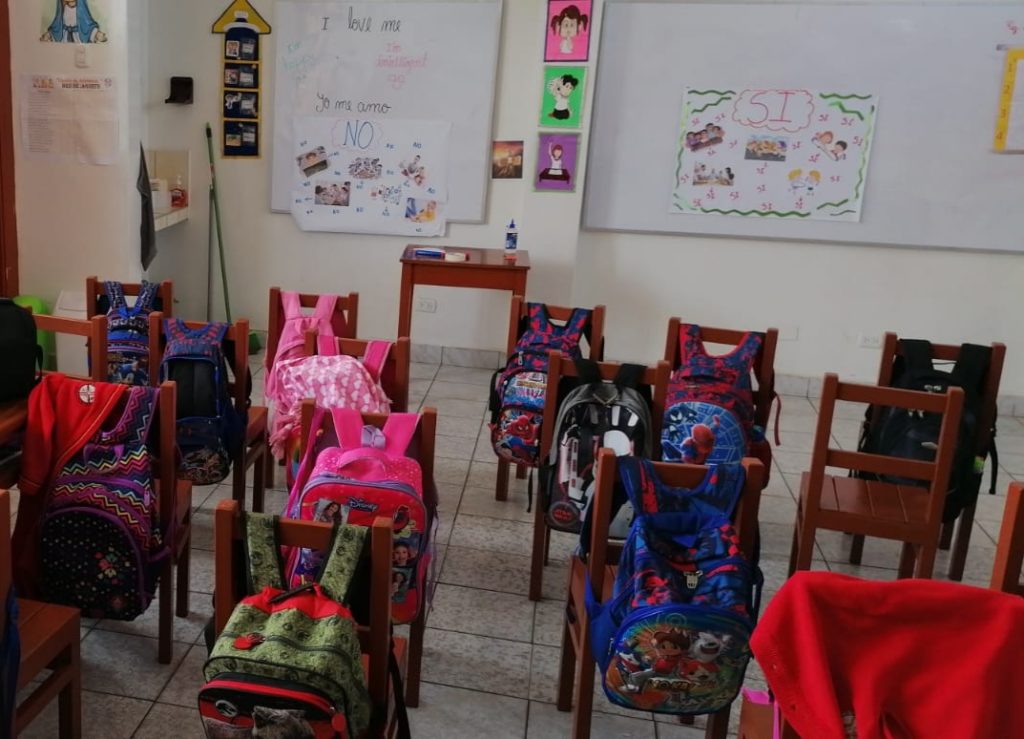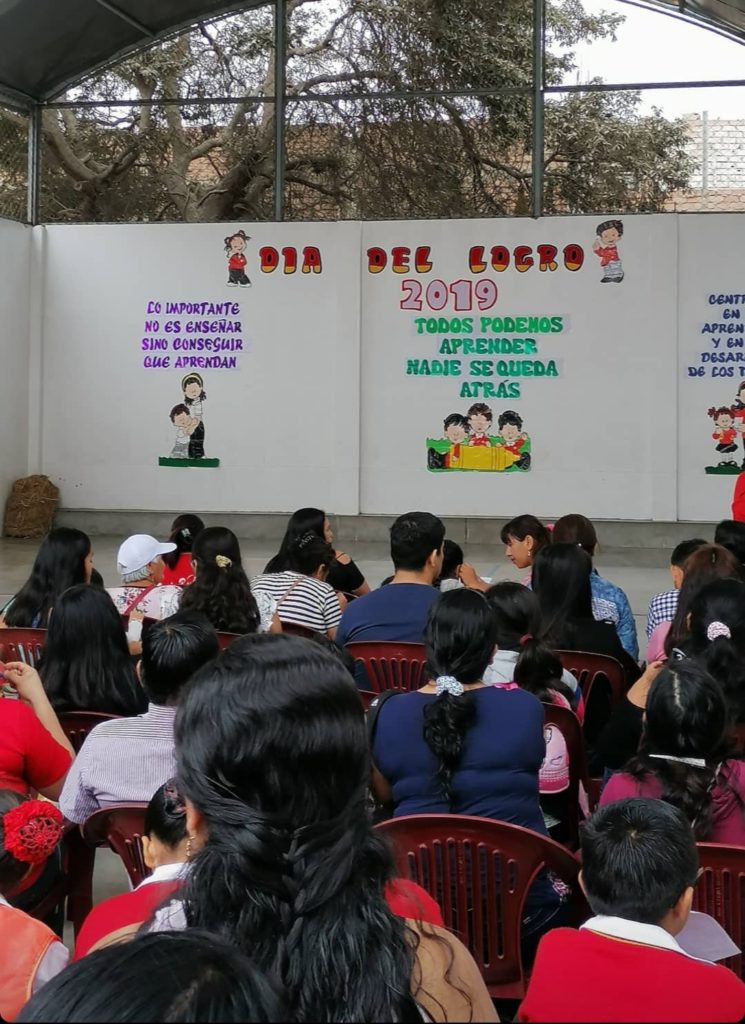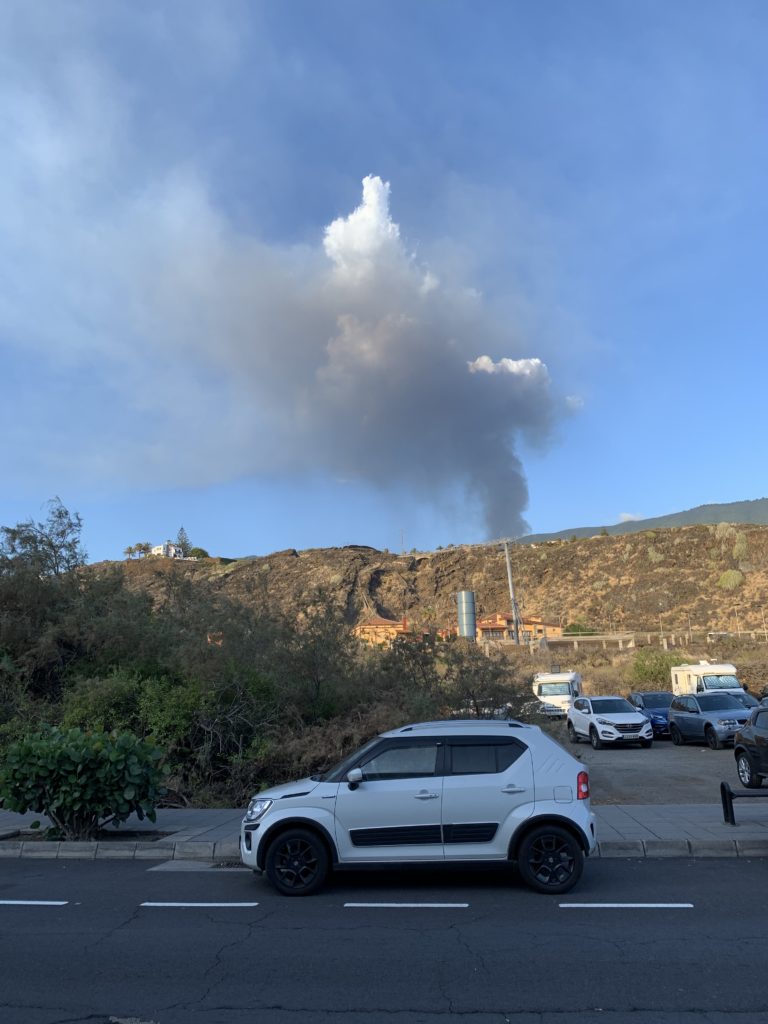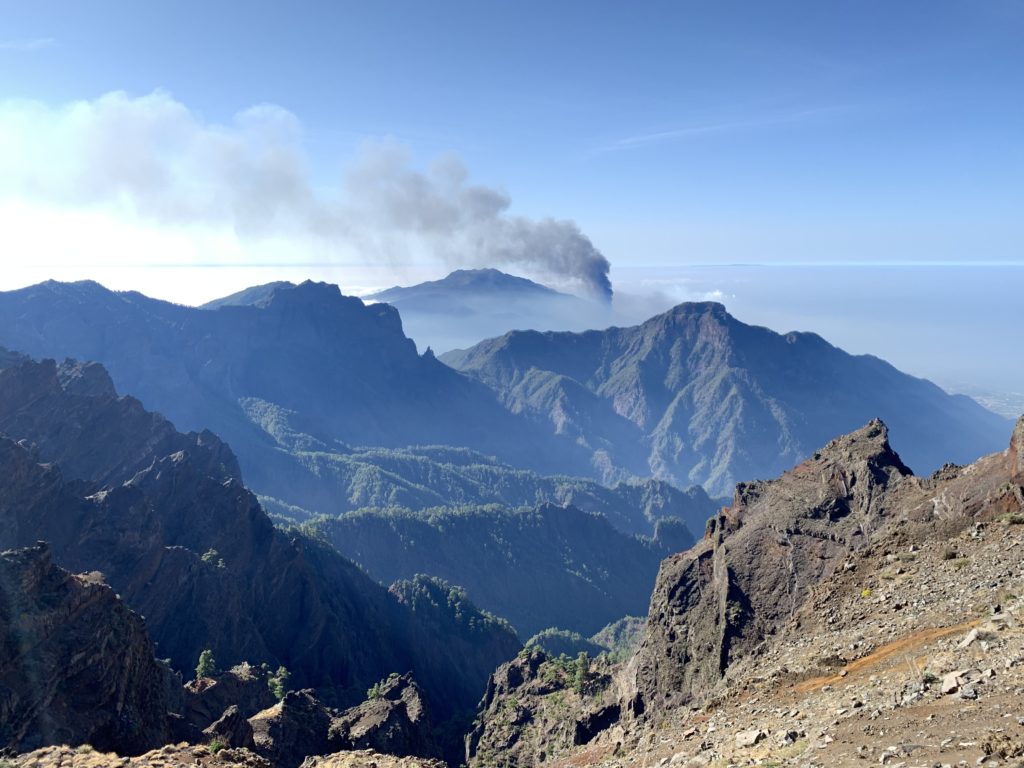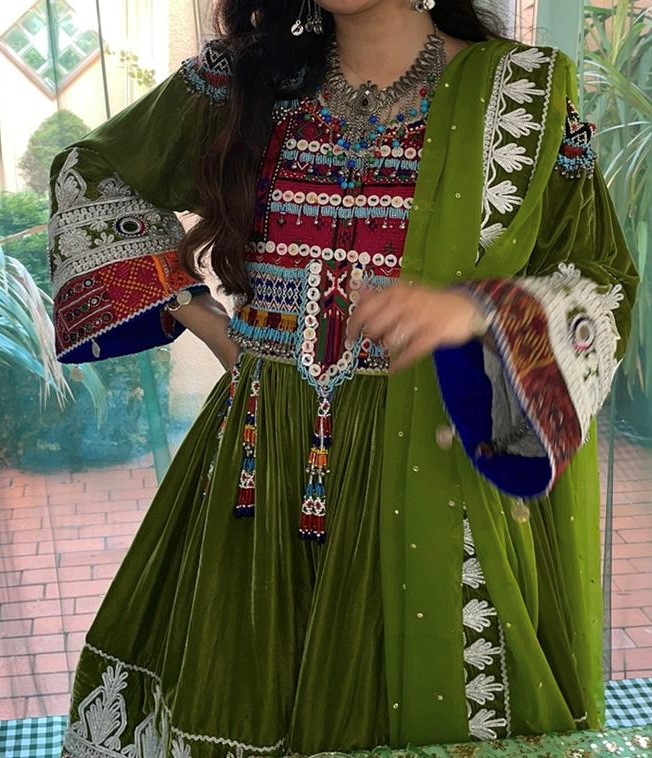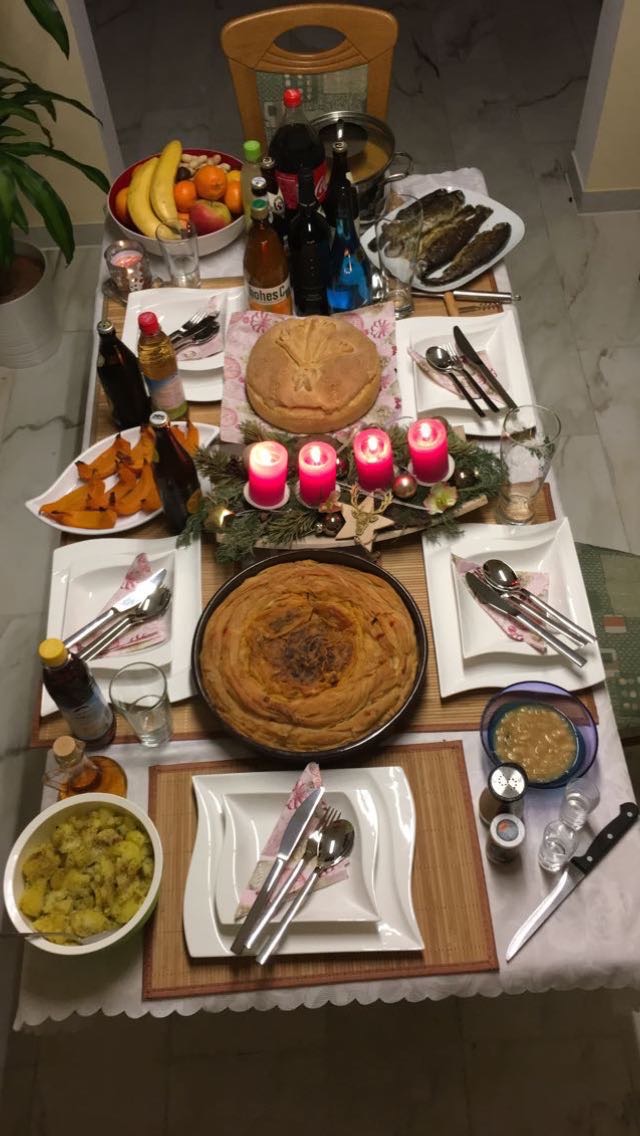The new eMAG is out – grab your copy in front of the old Cafeteria (D building) between January 29 and February 2!
Category: World & Travel
It’s not about the money
Why volunteer work is great
After finishing school, I didn’t really know what to do with myself. The only thing I knew was that I didn’t want to start studying at university right away. Many of my peers were struggling just like me – we all needed a break after finishing school, but we didn’t want to waste our time. And when we had an interesting presentation on volunteer work at school my decision was made – I wanted to work as a volunteer.
So, I went to Peru and worked as a volunteer. Due to the pandemic I stayed for eight months only. And honestly, I had the best time of my life. It was not only the work at an inclusive primary school that I loved, but the whole experience. I went out of my comfort zone and it was definitely worth it. Experiencing adventures was great; however, it wasn’t primarily the travelling part that made me grow but rather my everyday life as a volunteer.
Volunteer work means that you work for the common good and not for money. And working for the common good by helping people gave me so much more than money could have given me. It’s the experiences and obviously not the money that makes it special.
Personally, I enjoyed tutoring and teaching Peruvian children so much that I decided to become a teacher. This means that working as a volunteer even helped me discover my future profession.
Voluntary work usually isn’t monotonous or clearly defined in an employment contract. This allows you to try out a variety of different tasks. As you can read above, I enjoy working with children. However, teaching children was not the only work that had to be done at school. Decorating for Christmas and other holidays, cleaning the classrooms or organizing and counting the inventory were some of the tasks that I didn’t enjoy as much as working with children. The work still had to be done, though, and the smile on people’s faces when they spotted the finished decor always made my day. Ultimately, working as a volunteer made me experience things that I love, but I also learned what I don’t enjoy too much, which is just as important as knowing what you like.
Even though working in another country and getting to know a new culture is great, voluntary work isn’t about travelling, it’s about experiencing adventures that are out of your comfort zone. You don’t have to travel to work as a volunteer. You can also stay at home and teach children in your neighbourhood if you like tutoring as much as I do. You could also work as a first responder in your free time to help people in need and to widen your knowledge about the human body or you could play some music in a retirement home if you sing or play an instrument.
Life is too short to focus on money and there’s so much you can do voluntarily to spread kindness and to be adventurous.
Author and pictures: Natalie Menhofer
“La Isla Verde“
A fire-breathing giant awakens after 50 years of deep sleep
Have you ever met someone who told you about their cruel fate? No? I have. I was on a study trip to La Palma in September 2021 and on our flight home, a lovely elderly lady from Germany sat next to us and told us her story. The volcano’s lava had destroyed the little house she had had for decades, and she almost lost her dog as she was at a friend’s house when the lava approached. Luckily, she was able to save her dog; but in return, she lost most of her personal belongings.
Some general facts about the volcano
The Cumbre Vieja began to erupt on the 19th of September 2021 in its first eruption since 1971; the eruption is still ongoing. It’s important to note here that all volcanos of the Canary Archipelago are the result of a hot spot underneath the earth’s crust. Here’s where things get interesting: the Cumbre Vieja is not just one volcano. It is a large system of linear vents located on the southern half of La Palma. If you look closely at a map of the Canary Islands, you will notice that the islands form a kind of chain. The reason for that phenomenon is the interplay of the African plate and the hotspot. The African plate moves slowly north-eastwards but the hot spot doesn’t move, and this is how the different volcanos were built. A short side note here: The seven islands of the Canary Archipelago Tenerife, Gran Canaria, Lanzarote, Fuerteventura, La Palma, La Gomera, and El Hierro are islands of volcanic origin.
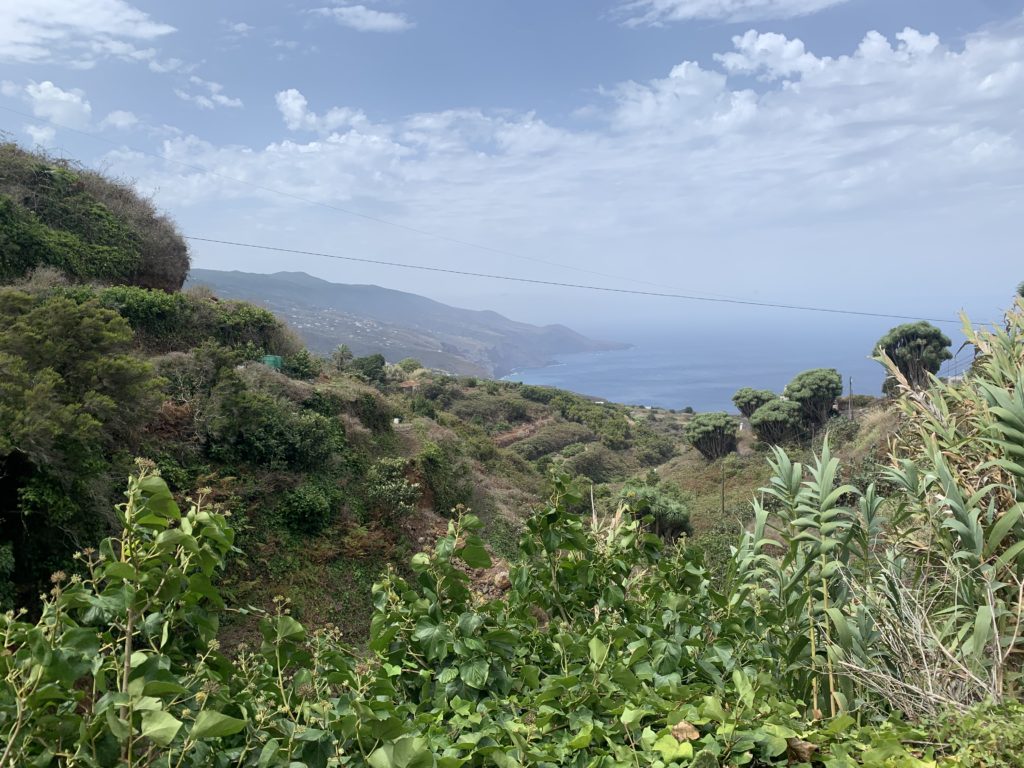
Consequences
The most unfamiliar thing for us was the constant rain of ash. I have never experienced this before. If the ash got into your eyes, it was anything but comfortable. Due to the ash, the outdoor area of the hotel and several restaurants and bars were closed. The locals couldn’t even keep up with sweeping. However, the effects of the volcano that we witnessed were still only the milder ones. After we left with the ferry to Tenerife because the local airport was closed, the situation on La Palma worsened. We got off the island at just the right moment.
Now let’s talk about the more serious consequences. Lava that’s pouring down the western side of the slope is causing a lot of misery. Masses of ash cover big areas of the island and the damage already caused by the lava amounts to about 700 million euros. According to a report, more than 2650 buildings have already been destroyed. Another sad fact is that the volcanic eruption has already killed one person. Unfortunately, it’s unpredictable when the catastrophe will end since strong activity is still taking place in 30 kilometers depth. About 7000 inhabitants have already been evacuated. Additionally, the 1300-degree hot lava has already destroyed about 1100 hectares. This includes 211.19 hectares of banana plantations, 60.02 hectares of vineyards, and 90 hectares of farmland. It’s interesting to note that the island has grown through the lava. On the west coast in the south of the island, a new peninsula of about 25 hectares amassed. This clearly shows that islands can grow, namely through lava. For a long time, it was assumed that the vapors that are produced when the lava meets water would be poisonous. However, this was disproven by experts.
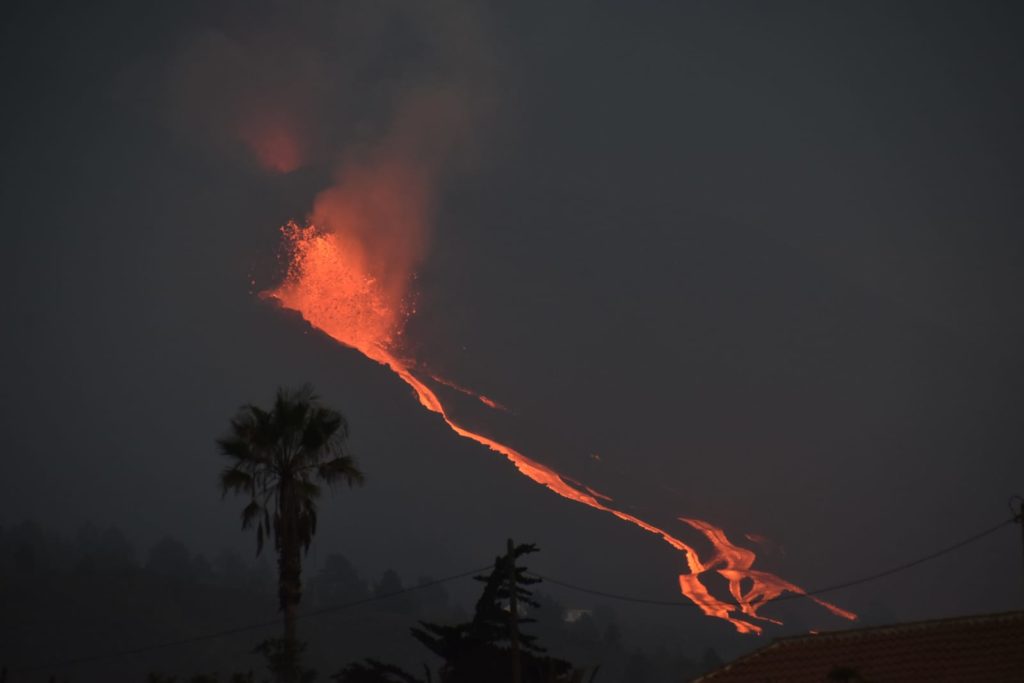
I am so sorry for the people living there because thousands lost their homes and big parts of the island were destroyed. Still, it was one of the most impressive and breath-taking destinations I have ever been to. I was privileged to see such beautiful places. It was just like paradise. And I mean… who has seen an active volcano in real life? That’s something I can cross off my bucket list.
Author and Photos: Lisa Straßer
Afghanistan – Diversity At The Hindukush
When people talk about Afghanistan, the only images that appear in many people’s minds are those that are negatively associated with the country, mainly through the media – for example war, Taliban, corruption, lack of human rights, poverty.
These points prevail in reality, especially since the last months, when the radical Taliban came to power again. Many citizens tried and are still trying to flee, which shows that Afghanistan is a current topic and also affects the West.
One should not deny these prevailing conditions, but I can say from personal experience through my family that there is more to this country than just war, terror and poverty. However, many people are not aware of the country’s overwhelmingly positive qualities, and in general it can be said that little is known about the country.
Afghanistan is mostly located high in the Hindukush mountains and has 6 neighbouring countries including Iran, Pakistan and China. Its history dates back to the 10th century and continues to evolve today due to turmoil. The diversity of the country can be seen in its language, culinary arts, clothing and landscape.
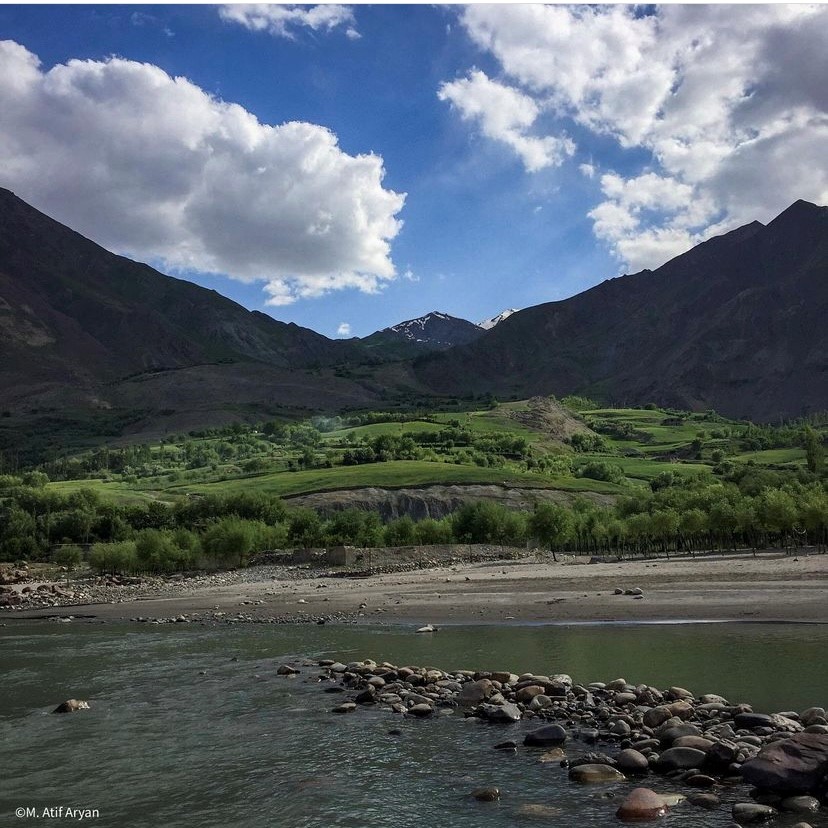
Due to the fact that many different peoples come together, there is significant linguistic diversity. There are about 50 different languages and about 200 dialects spoken throughout the country. 50% of the population speak Persian, 35% Pashto, 15% Uzbek, Turkmen, Baluchi and other dialects.
Afghan food is characterised by the use of various spices, most of which come from India and make the dishes seem unusual to Western palates, such as turmeric, curry, ginger, coriander, cardamom and aniseed. Of course, the dishes taste different depending on the region, but the principle of cooking remains the same. The most popular food among Afghans are the various rice dishes, including “Kabuli Palau”: rice dressed with carrots, sultanas and lamb. Besides brown rice, there is also regular basmati rice and yellow sour-sweet rice, which is usually cooked with chicken and certain oranges that grow exclusively in Afghanistan. The yellow colour comes from the “yellow gold” called saffron. Another popular dish is “mantu”: a kind of stuffed pasta with minced meat, tomato sauce and yoghurt. In addition to these popular dishes, there are also various sauces that are eaten with rice, such as “Sabzi Chalau” (spinach) or “Kofta Chalau” (meatballs). The national drink of the Afghans is green tea.
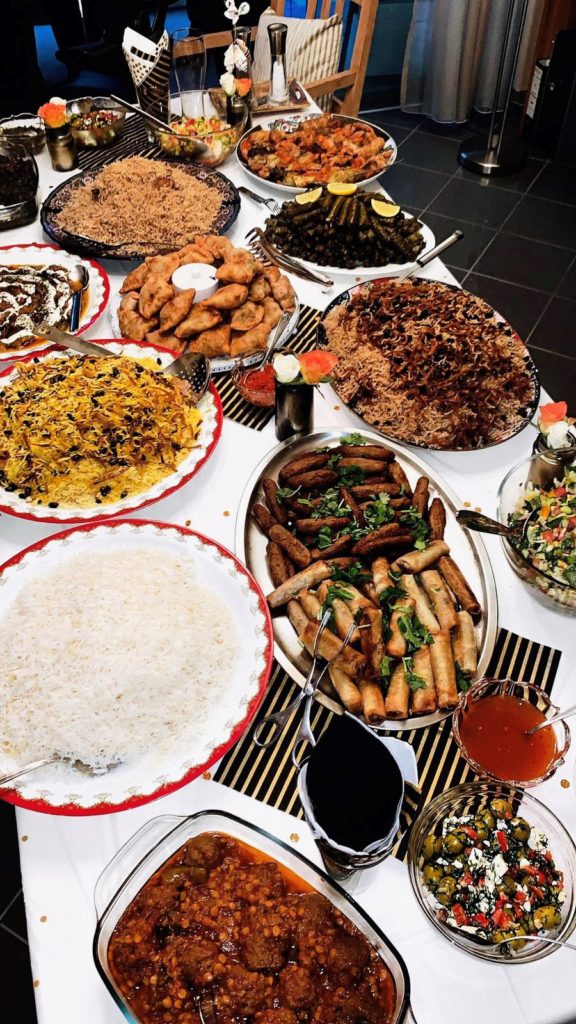
Afghan Dishes 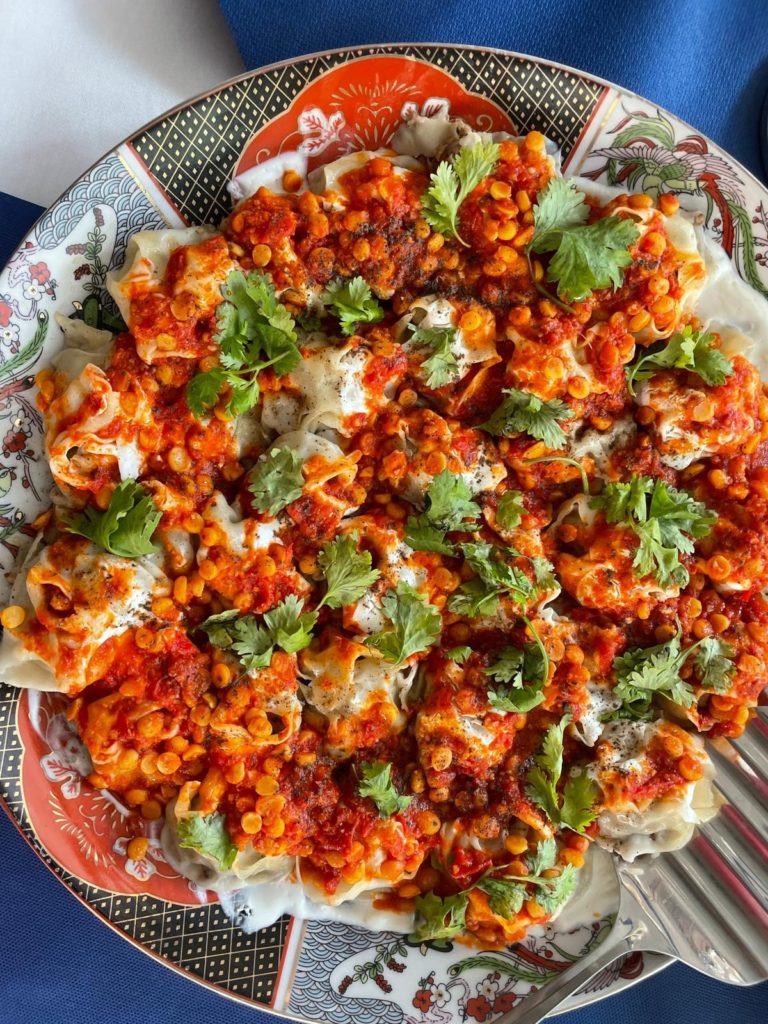
Mantu
The traditional dress of the woman originates from the nomads and consists of loose-fitting cloth trousers (“salwar”) and a long-sleeved dress (“firaq”). There is also a kind of headscarf (“chodar”) to complete the outfit. The colour of the dresses can vary, but red is usually preferred. The dresses are decorated with colourful embroidery, small mirrors and beads, but can also be plain without embroidery for everyday wear. However, with the Taliban takeover, wearing the blue burqa has become compulsory. Men also wear loose-fitting trousers, a long top (“piran-tunban”) and another waistcoat (“waskat”). It is typical for the older men to wear a turban as a head covering.
Besides mountains, there are rivers, lakes, a national park (“Band-e-Amir”) and desert areas. Despite the different climatic conditions, the soil is fertile and melons, citrus fruits, pomegranates, mulberries and much more grow. Afghanistan and its diversity deserve to be talked about.
Author: Medina Younossi
The story behind garden gnomes
Cultural heritage or just a funny German tradition?
Walking through a German suburb, you often get to see some little red-capped and white-bearded creatures, smiling or staring at you. Garden gnomes. “Oh no”, you think while passing by, “this is so typically German”. In fact, an estimated 25 million garden gnomes live in Germany’s gardens. So, no wonder that they became a part of many people’s imagination of a German stereotype. But do you actually know where this trend comes from?
What are garden gnomes?
Garden gnomes are small statuettes that are used as garden décor. Most of them look like squat little men with white beards and red pointy hats, so-called Phrygian caps. You can spot the typical gnomes doing leisure activities like gardening (while holding their garden tools, of course). However, a current funny part of this trend is that some gnomes portray stereotypes of certain groups or carry uncommon attributes. So, a real garden gnome collector may be in possession of figures with biker suits, a German football jersey or a bathing suit and sunglasses. People might even give them names – there really are no limits to creativity!
The origin of garden gnomes
To discover how these little guys actually came to end up in our gardens, we have to travel back to ancient Rome, when decorating already was a huge thing. Back then they put statues of their fertility god in gardens to defend them from evil spirits. During the Renaissance era, the folklore around gnomes grew thanks to German fairy tales and myths. Inspired by stories portraying gnomes as little creatures living in forests, people put the statues in their gardens as well by the beginning of the 18th century. However, at this time only wealthy families could afford that, as the first gnomes on the market were made of terra cotta. Nevertheless, the trend soon spread across Europe and the production of garden gnomes flourished in Germany. Thanks to new and more economical options for material, gnomes also became affordable for lower classes.
The mystic part behind it
“Garden gnome” comes from the Greek genomos meaning “earth-dweller”. As I already said, the popularity around gnomes emerged from myths and legendary tales. Gnomes were believed to have magical powers and to live underground or deep in a forest. Traditionally, people believed that gnomes could help humans in their garden, but only during the night when nobody could see them – as in the light of day they would again transform into stone. We might probably never know if this part of the story was really true – or have you ever spent an entire night in your garden looking to see if anything was moving?
The traveling gnome prank
If you’ve never heard about the Garden Gnome Liberation Front, this game will probably amuse you. The community originating in France made it their mission to liberate garden gnomes from their owners’ servitude and take them with them on their travels. The owners then received pictures of their stolen gnomes in front of famous places – and when the gnomes were returned after their journey, they often carried a travel diary documenting their newly gained freedom.
So, a German cliché?
As you’ve seen, there’s much more behind the story of garden gnomes than you might have thought. Their stories date back to ancient mythologies about gnomes and dwarfs, which were told through generations. Today, apart from a handful of serious garden-gnome-collectors, people certainly regard them as funny. However, they’re still part of Germany’s cultural heritage.
Author: Marie Peter
An insight in North Frisian customs
Since I was two years old, I have been to the North Sea at least once a year, therefore this area is like a second home to me. Almost everyone has been to the North Sea of Germany at some point in their life, but most people don’t know much about the actual lifestyle of this North Frisian area, probably also due to the fact that most traditions are celebrated outside the school holidays when most tourists are visiting the area. That’s why I invite you on a journey through a whole year of North Frisian customs.
North Frisia is the northernmost district of Germany. It is located within the German state Schleswig-Holstein and includes the mainland area from the town Hattstedt-Schobüll up to the German-Danish border and also the North Frisian Islands Föhr, Amrum, Sylt, Helgoland, Pellworm, Nordstrand and the Halligen.
We assume that the custom called Biikebrennen goes back to the Middle Age where it was used to drive away evil spirits in order to save the new seeds. Later, in the time of whaling, it served to send off the whalers. Biikebrennen is celebrated on the 21st of February. During the week beforeeach village builds up a huge stack of wood, mostly out of old Christmas trees and other garden waste, which is burnt down in a celebratory ceremony with singing, performances or poems presented in the North Frisian dialect. Traditionally, green cabbage is eaten afterwards.
At the end of April or the beginning of May, the Brent goose days take place. At this time of the year, about 80,000 brent gooses take a rest in the mud flats. It is mainly celebrated on the Halligen with guided tours, lecture series, boat trips, mudflat hiking tours and play activities for children.
The Cabbage days of Dithmarschen is a two-weeks celebration of the superfood cabbage which takes place at the end of September. Stationary elements of these days are the first cut of the cabbage harvest, city festivals, craft markets, cabbage workshops, festival marquees, the cabbage slice championship as well as the cabbage race in Marne.
Another custom is the setup of the “Jöölboom“, also called Frisian tree, which is a variety of Christmas tree. It consists of a small wooden frame with a circle of green branches. Inside the circle, the frame is decorated with figures out of salt paste that represent a pig, a cow, a sheep, a horse, a rooster, a sailing ship and a mill. At the bottom of the frame, we see Adam and Eve under an apple tree with a snake. Other decorations can be natural products such as apples, raisins or prunes. The Jöölboom is mostly placed at a window or on a table in the living room.
The last custom of a year is the one of the night of New Year’s Eve; on the Halligen it is called “Rummelpott-walk”, on Föhr “Kenkner”, “Hulken” on Amrum and “Masked walk of Omtaaceltics” on Sylt. Groups of friends who are dressed up, go from door to door, sing songs accompanied rhythmically of their “Rummelpott”, which is a type of drum that had its heyday in the 15th to 18th century. In return for their music and performance the group receives apples, baked products or other sweets. Groups of adults often get a glass of liquor instead of sweets.
These are the main North Frisian customs of a year. I hope I could give you a new view on this area and its culture; And who knows – maybe you will have the chance to experience one of these customs one day!
Author: Annika Domschat
Festive season in January?
Celebrating orthodox Christmas in Germany
“Merry Christmas” is a phrase I would typically say in December as me and my family celebrate Christmas on the 24th of December, just like every other Christian families does, right? Well, at least I thought so until I got to know my best friend. She and her Macedonian orthodox Christian family celebrate Christmas on the 6th of January. With the help of her real life experiences, I want to illustrate some background information and traditions of a Macedonian orthodox Christmas celebration in Germany.
What is the orthodox church?
The orthodox church alongside roman catholic and protestant church form the three main Christian groups. Orthodox beliefs don’t differ in many ways from the other two, but it is divided geographically e.g. to Eastern and Oriental Orthodox Church. Those do have theological differences within because this belief forms partly from traditions which differ around the world, even though the main beliefs in Jesus Christ as the embodiment of God and his reincarnation, crucifixion and resurrection, stay the same. The Eastern Orthodox church is again subdivided geographically, rather than divided by nations and all churches are either autocephalous (have their own head) or autonomous (self-governing). They still go by the Julian calendar which explains the time differences to our Gregorian calendar.
The relatively small Republic of North Macedonia shares borders with Serbia in the north, Bulgaria in the east, Greece in the south and Albania in the west and is therefore landlocked in the eastern part of Europe. The Macedonian orthodox church is a belief which about two-thirds of the North Macedonian population professes, but it isn’t recognized autonomously by all of the other churches.
What does a typical Christmas look like?
The orthodox church puts a lot more emphasis on family and Jesus than the typical German Christian family. When I was a kid, Christmas was mainly about the presents and good food, but as my friend told me, her family doesn’t exchange gifts at all on Christmas. However, food is an important part in their traditions as well. In the time before Christmas, they fast, which means in this case following a vegan diet. Fish, however, is still allowed in this diet and the fasting lasts up until and including the 6th of January, so effectively their Christmas Eve.
Another important tradition is the coin in the bread. They put a coin in the bread dough and when it’s time for dinner the bread gets separated between the family members, including a piece for Jesus and Maria and other people or things that are important and loved by the family. All the bread must be eaten or else it allegedly means bad luck and whoever finds the coin in their piece is to have good luck during the next year. If, for example, the kid gets the coin, he or she also gets a little money from the parents and if the coin is for example in the piece for their house, the family is supposed to buy or do something for the house, like giving it a fresh paint or buy some sort of accessory for the house.
A very interesting aspect of their dinner is that once a person sat down at the table, they are not allowed to stand back up or if they do and then sit back down, they are not allowed to eat anymore. Because of that, the family gathers everything they might need during dinner on the table before sitting down, which always ends in an awfully full table, as my friend states.
What does it feel like to celebrate Christmas later than all of your friends?
In this section I can only speak for my friend who told me all of this and I know that it is probably different for everyone experiencing it. First of all, she states that celebrating later has pros and cons. She never has to argue about which family dinner to attend with her roman catholic boyfriend, as they have separate dates for celebrating Christmas and can subsequently simply do it twice. Generally, she says that when it comes to the 6th of January, she is usually not in a festive mood anymore because all of the people around her already throw out their Christmas trees and are done with the festive season. It sometimes feels weird to still celebrate Christmas. Also, because it is usually the last day of the holidays, her parents have to work the next day and she has to attend to university the next day, they only have one day to celebrate and almost no opportunity to visit relatives the following day like I have when I celebrate on the 24th.
After all, please don’t forget to wish your orthodox friends a Merry Christmas on the 6th of January, I know that they will appreciate your consciousness about their culture very much!
Author: Sandra Rieger

